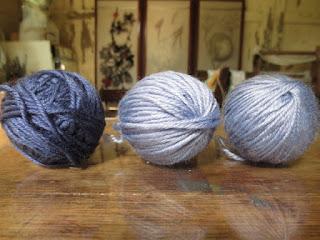Saturday, 6 August 2016
Yarning
The first sessions with surgeons and surgical students have been focusing on basic drawing and embroidery skills. To ease us into the day we have begun with two exercises, drawing and yarn balling. This post will focus on the yarning!!
To take yarn and roll it into a ball seems easy enough but if you watch yourself do it and then try and describe it to someone else it becomes very complicated! The joy of our hand -eye-brain coordination which we take for granted. (For the purpose of understanding I refer to the hand you use most often as the dominant hand, DH, as left and right handedness is a subject for discussion in itself.)
With your DH you wind rhythmically and with even tension observing all the time the wrapping around to create the ball. It is the other hand that is doing all the work ! The thumb is working in counter tension with the little and ring finger to rotate the ball, whilst also acting as a thread guide. Your index and middle fingers drive the motion of the ball with a small turn so that the yarn spirals. ..and you don't even think about it. Starting off is the most tricky and I taught a very neat 'figure of eight and fold over' method but some prefer to make a sausage of yarn and then fold that with the less dominant hand to create the centre. Surgeons are quite good at this !
This simple exercise give us time to discuss tension and rhythm and how the twist is vital not only to creating yarn but also controlling it. Rhythm is vital to 'getting the knack' of something when learning new skills and tension is what makes stitch work properly. It was also noted how meditative this was.
We talk about the idea that 'if it looks good then it is good'. To put it very basically if a stitch is correct and looks neat then it will work whether it be for embroidery or for surgery. Neatness is not just about being pretty it has a necessary working function.
Some of these ideas relate back to the drawing as we are creating a sphere from a line just like drawing an apple. Rhythm is just as important in drawing as is weight of line and tension of line.
Subscribe to:
Post Comments (Atom)

No comments:
Post a Comment